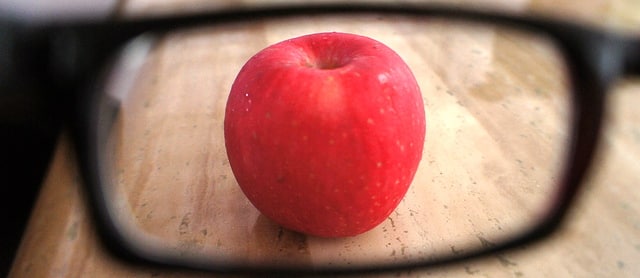More than a million Americans are blind. The good news is that all four of the most common causes of vision loss may be prevented with a healthy plant-based diet—age-related macular degeneration, diabetes, glaucoma, and cataracts.
See my 2-min. video Preventing Macular Degeneration with Diet for a discussion of the relationship between vision loss and Harvard’s Alternative Healthy Eating Index (Calculate Your Healthy Eating Score offers an alternative to the alternative). Diabetes is not only a leading cause of blindness, but also of amputations and kidney failure.
Glaucoma is a deterioration of our optic nerve, the nerve that connects our eyes to our brain, and is second only to cataracts as the world’s leading cause of blindness. Surprisingly, we still don’t know what causes it, so there’s been a desperate search for environmental and dietary influences.
As I show in my 2-min. video Prevent Glaucoma and See 27 Miles Farther, the most protective dietary component—decreasing the odds of glaucoma by 69%!—was found to be the consumption of at least one serving of collard greens or kale per month. Just once a month or more. The silver and bronze medals for most protective food went to weekly carrot and peach consumption, respectively.
We think it may be the lutein and zeaxanthin, two yellow plant pigments in greens that seem to know right where to go. When we eat them, they hone right into our retinas and appear to protect against degenerative eye disease. This is not a unique phenomenon. Lycopene is the red pigment in tomatoes found protective against prostate cancer. Guess where it goes when a man eats a tomato? Straight to the prostate. Beta carotene in foods may prevent ovarian cancer and happens to build up in one’s ovaries.
These phytonutrients not only protect, but also may improve our vision. Their peak light absorbance just so happens to be the wavelength of the color of our planet’s sky. According to a recent study, by filtering out that blue haze, “individuals with high macular pigment [lutein and zeaxanthin phytonutrients from greens]” standing atop a mountain on a clear day “may be able to distinguish distant mountain ridges up to 27 miles further than individuals with little or no pigment.”
Don’t eggs also have significant amounts of these critical eyesight-saving nutrients? That’s the egg industry scrambling the truth—see my 2-min. video Egg Industry Blind Spot. I’d also encourage folks to stay away from lutein pills (and beta-carotene supplements).
Finally, the leading cause of blindness and vision loss: cataracts. In my 2-min. video Preventing Cataracts with Diet I profile a study of 27,670 people with a wide range of diets. The study included so-called “high” meateaters, moderate meateaters, “low” meateaters, and fish-only eaters, versus those eating vegetarian and those eating vegan.
The researchers went out of their way to choose health-conscious subjects to help factor out smoking, exercise, and other nondiet variables, and so the “high” meat consuming group? Only 100 grams a day–that’s just like 1 serving in one meal a day. In the U.S. we average more than 300 grams a day, so this is like reverse Starbucks labeling. You know how their “tall” is the small? Well here their “high” is really quite low by American standards. Yet even compared to health-conscious light meat-eaters, those cutting back on meat even further could drop their associated cataract risk 15%. Those cutting all meat other than fish had 21% lower risk. Those cutting all meat—the vegetarians—appeared to drop their risk 30% and those going a step further and eliminating eggs and dairy had 40% less risk than the healthy one-serving-a-day meateaters.
The researchers conclude: “Overall, compared with meat eaters who consumed 100g meat and meat products/d[ay], fish eaters, vegetarians, and vegans had approximately 20%, 30%, and 40% lower risk of cataract, respectively.” Similar stepwise reductions of risk can be seen with other diseases such as diabetes, hypertension, and obesity. A stepwise drop in risk as one’s diet gets more and more centered around plants.
-Michael Greger, M.D.
